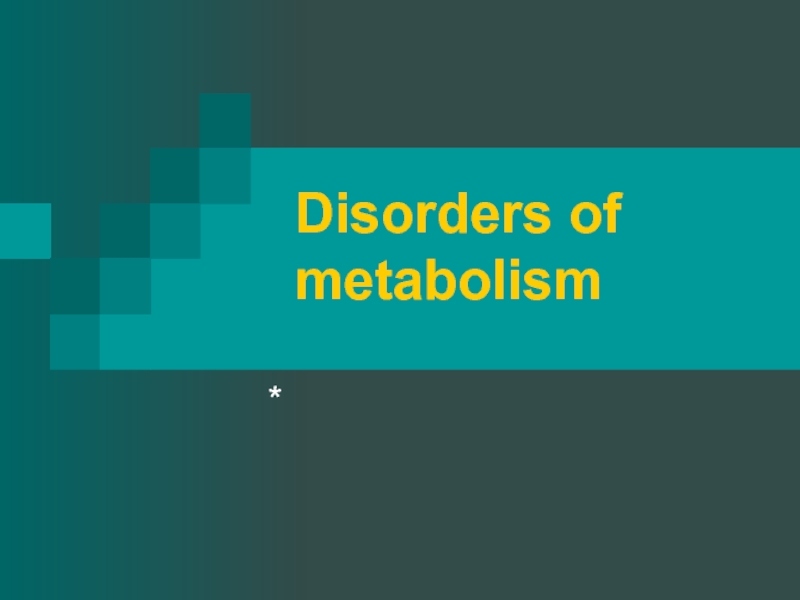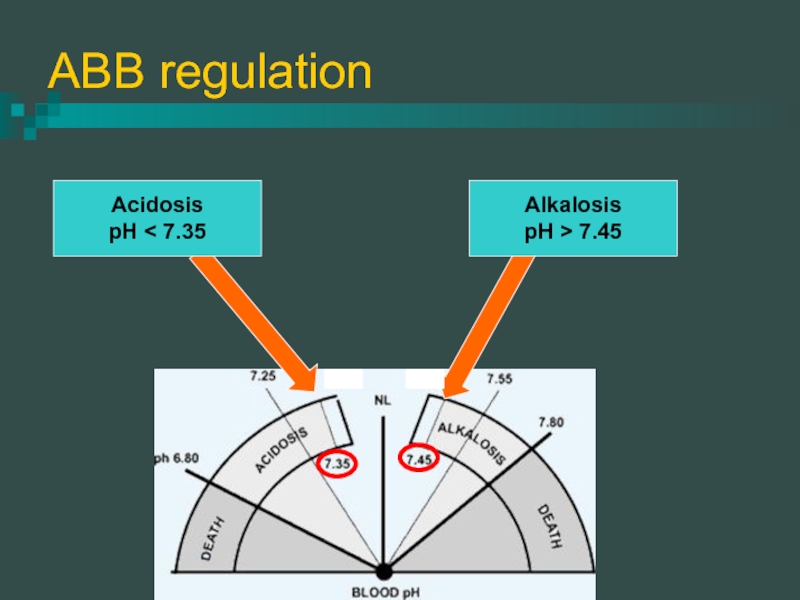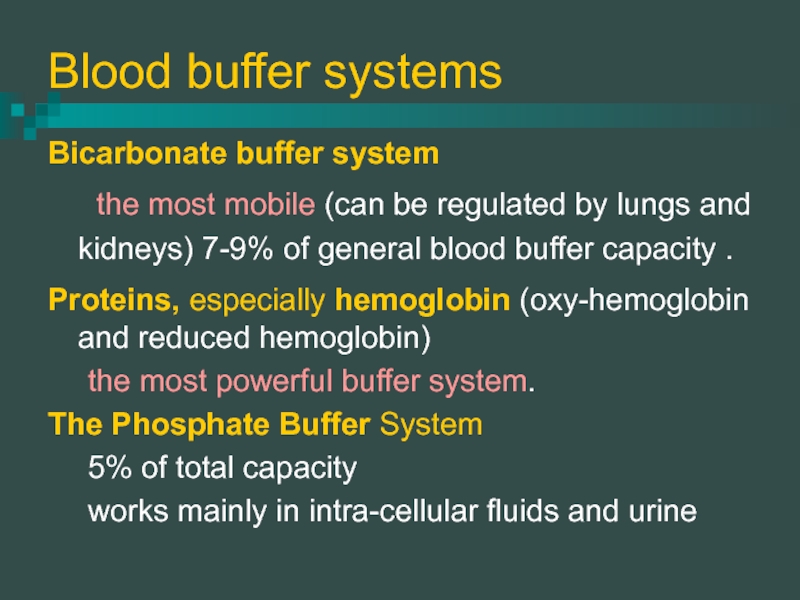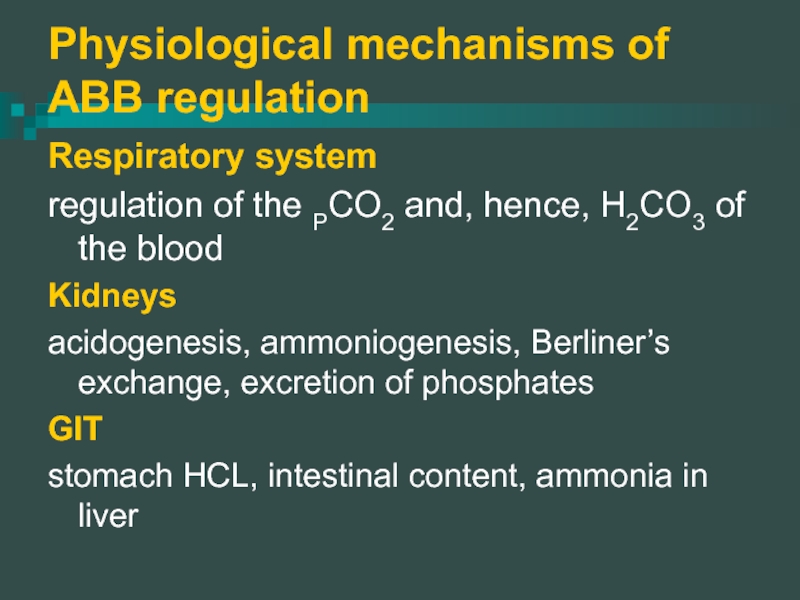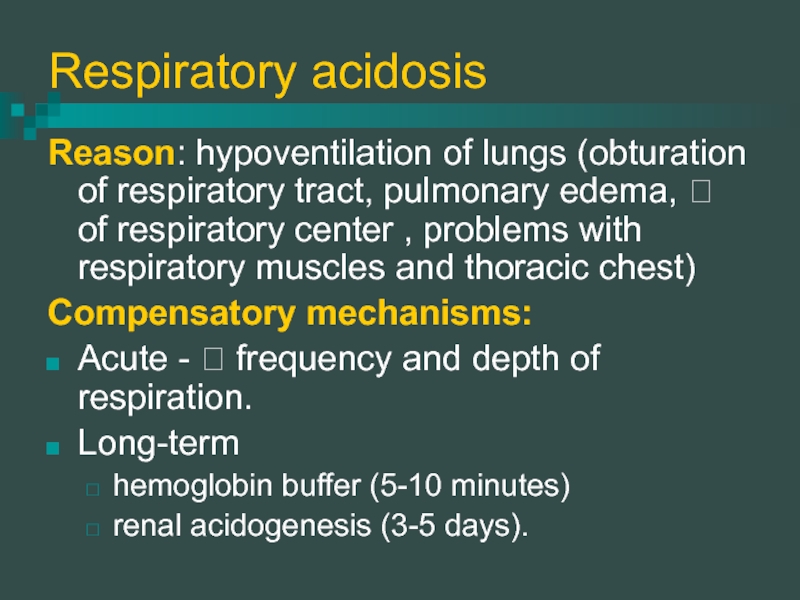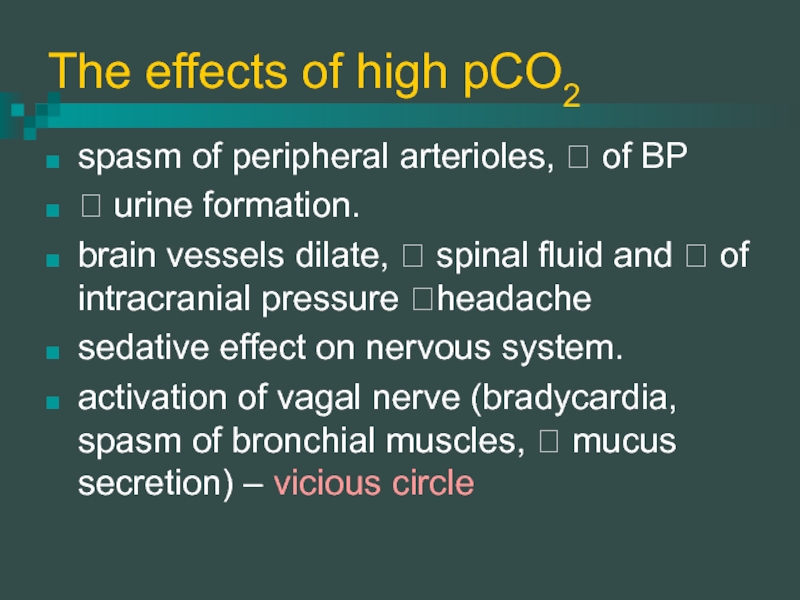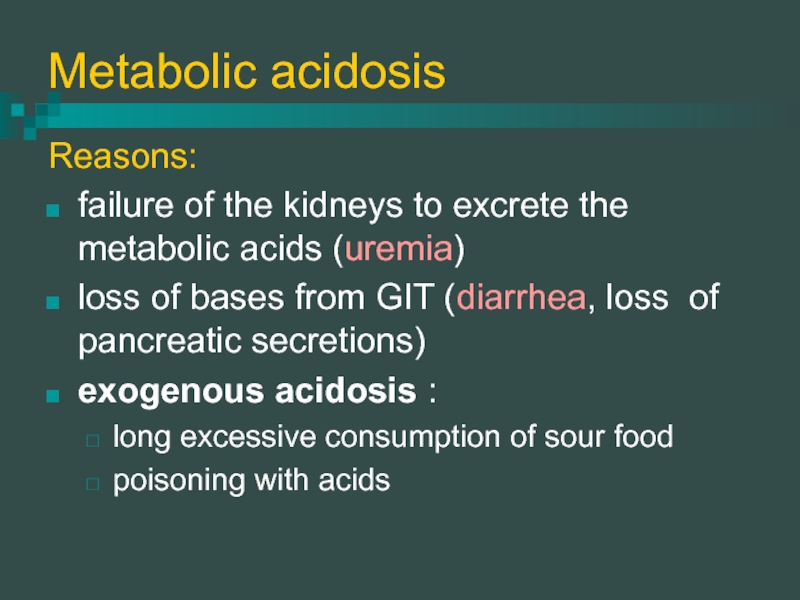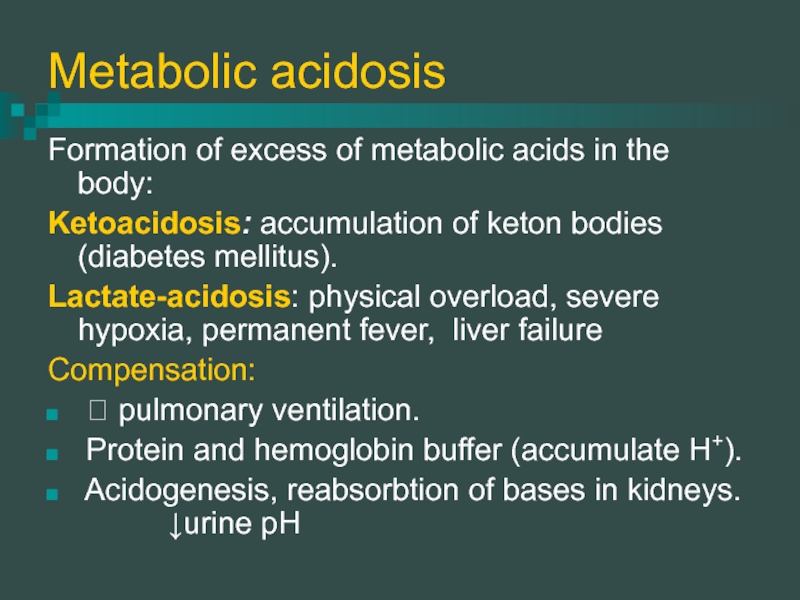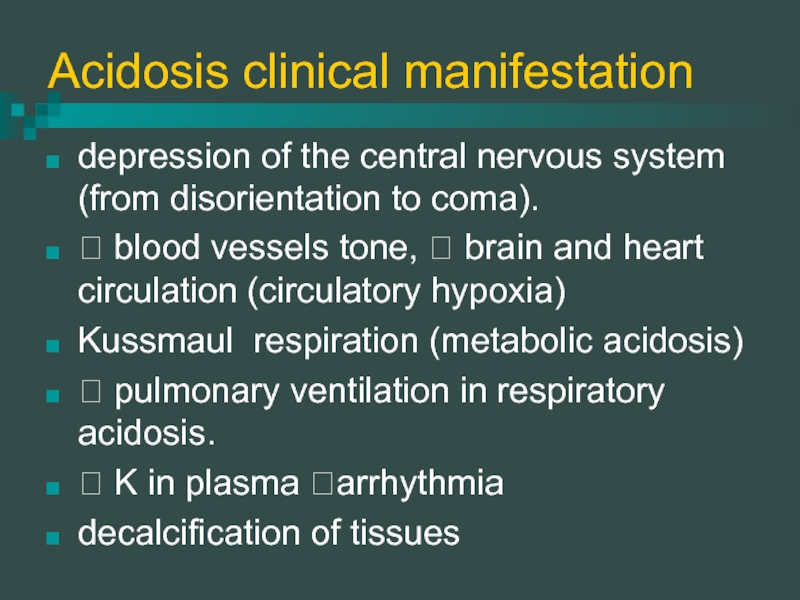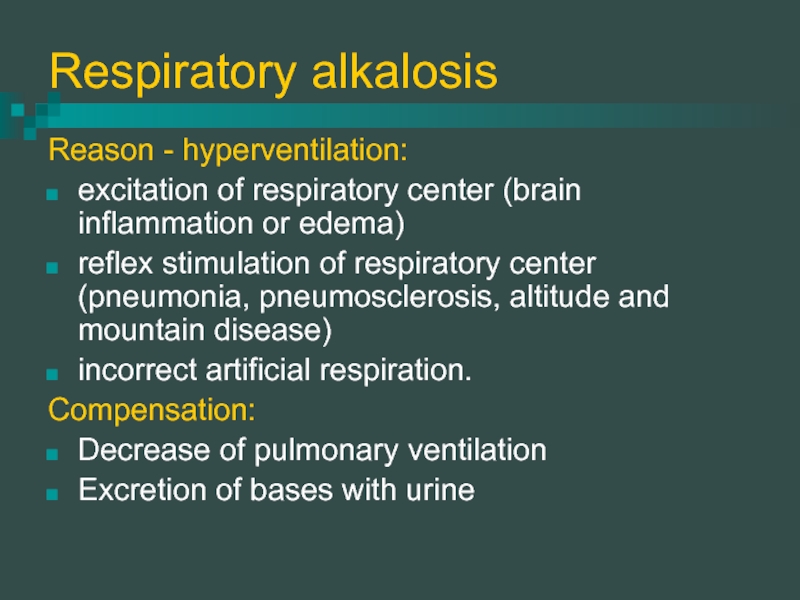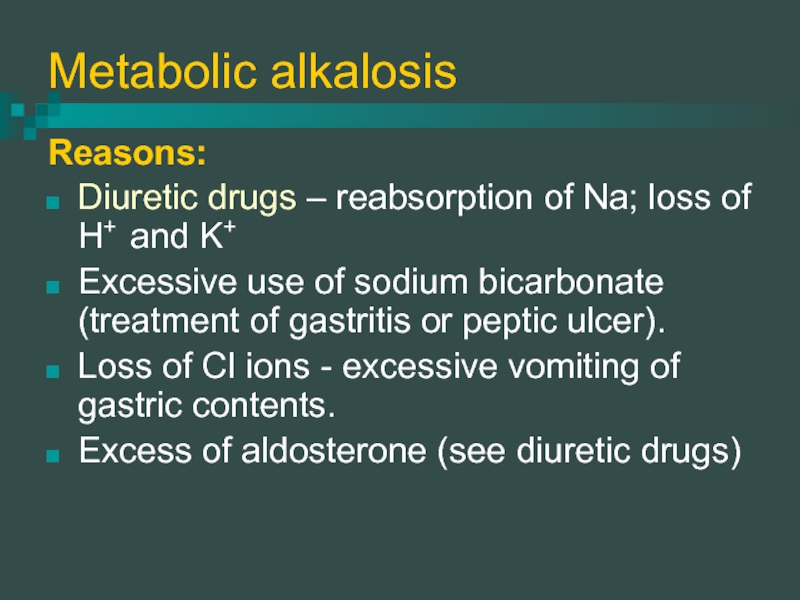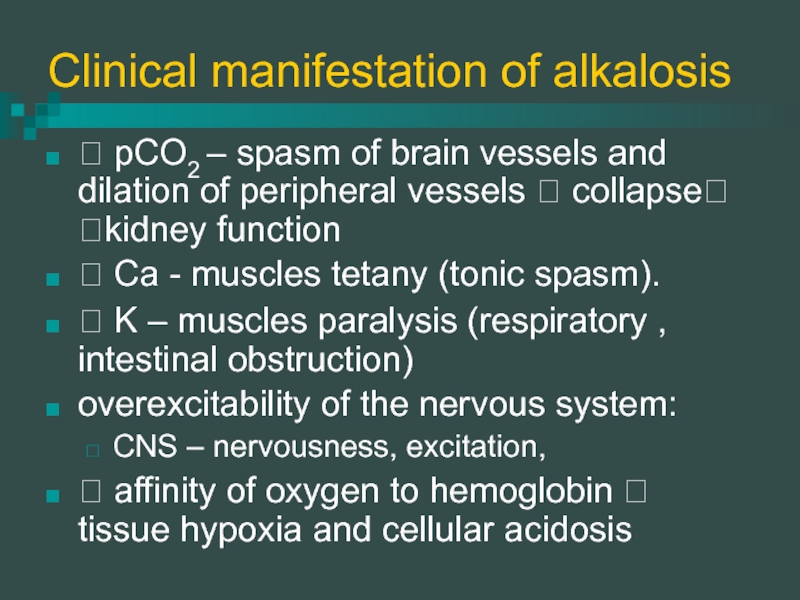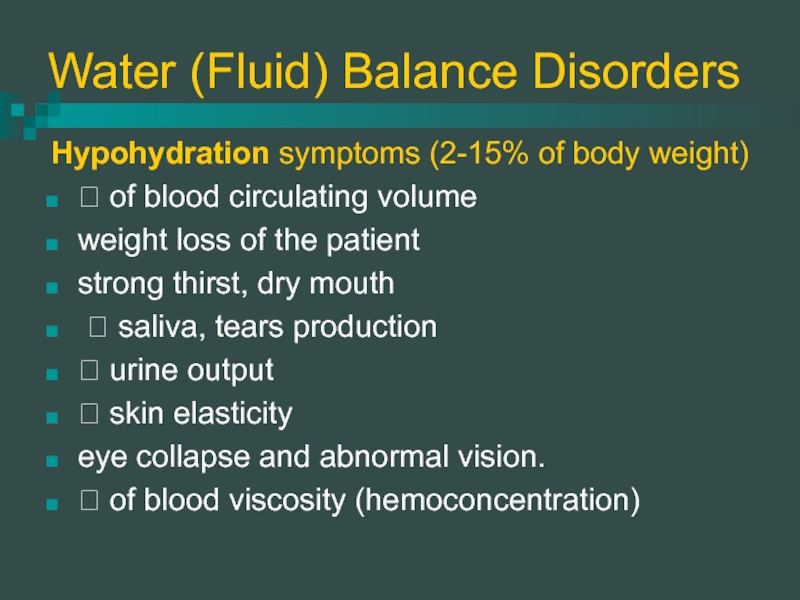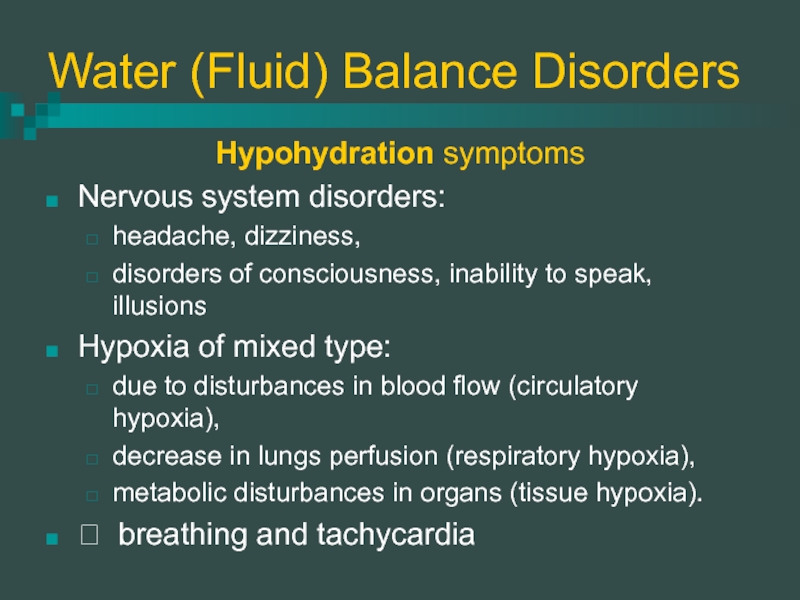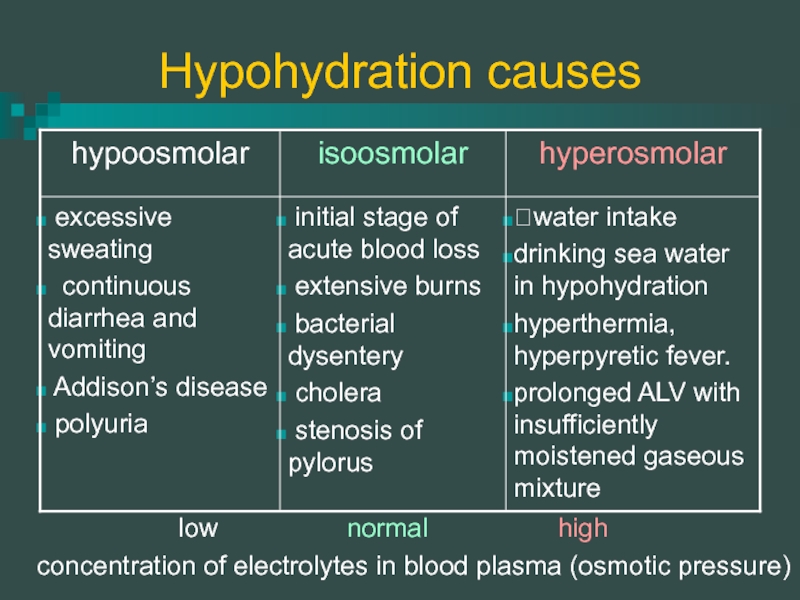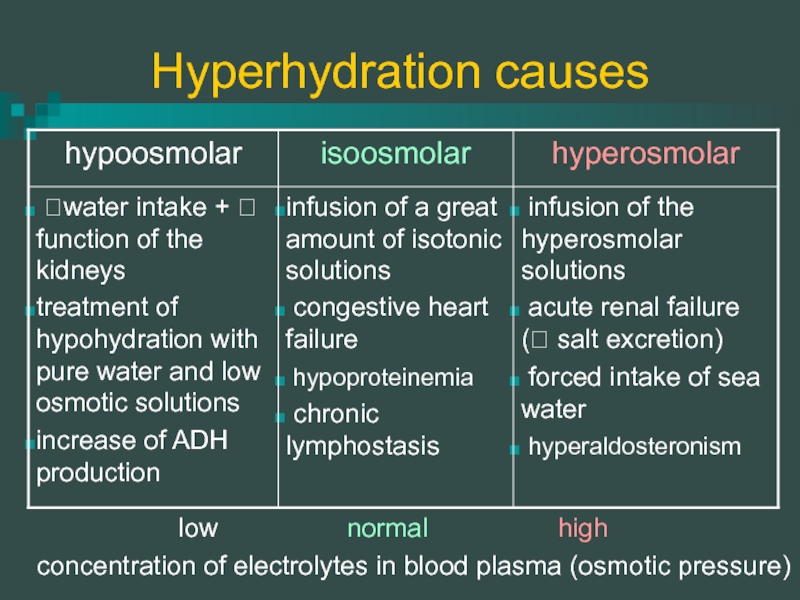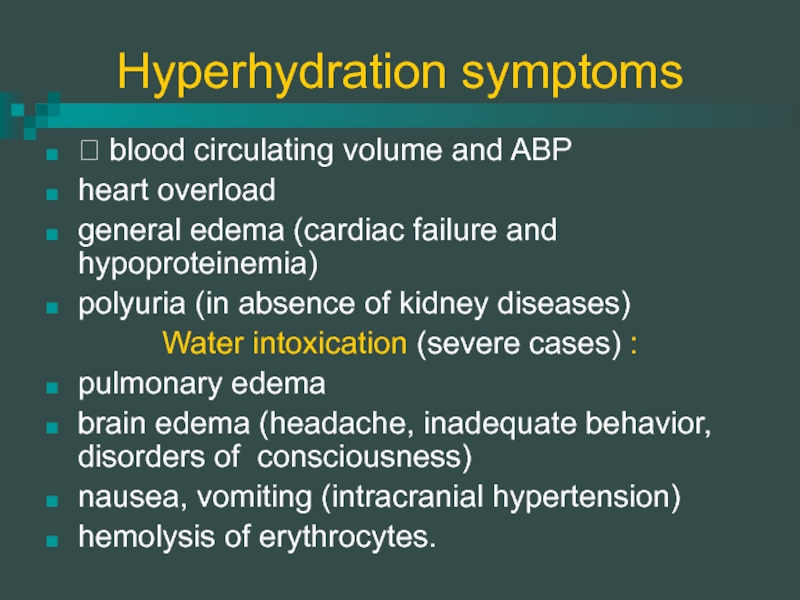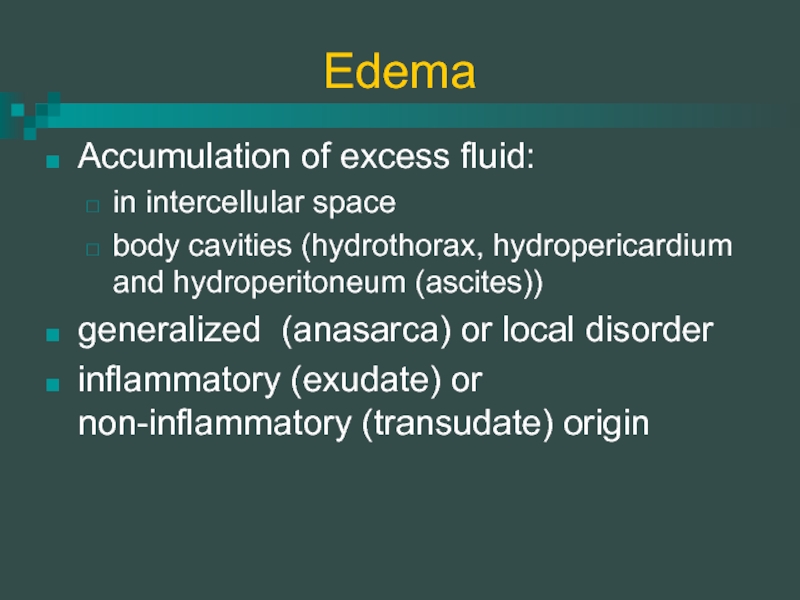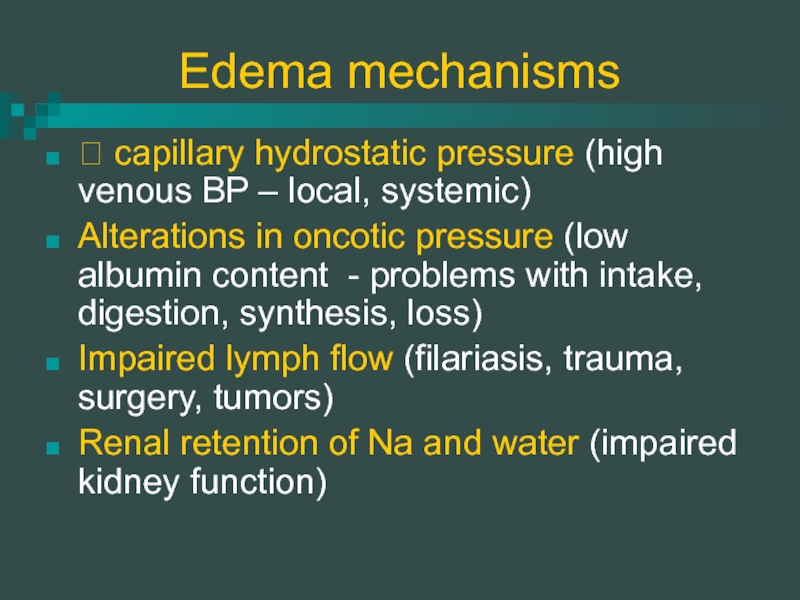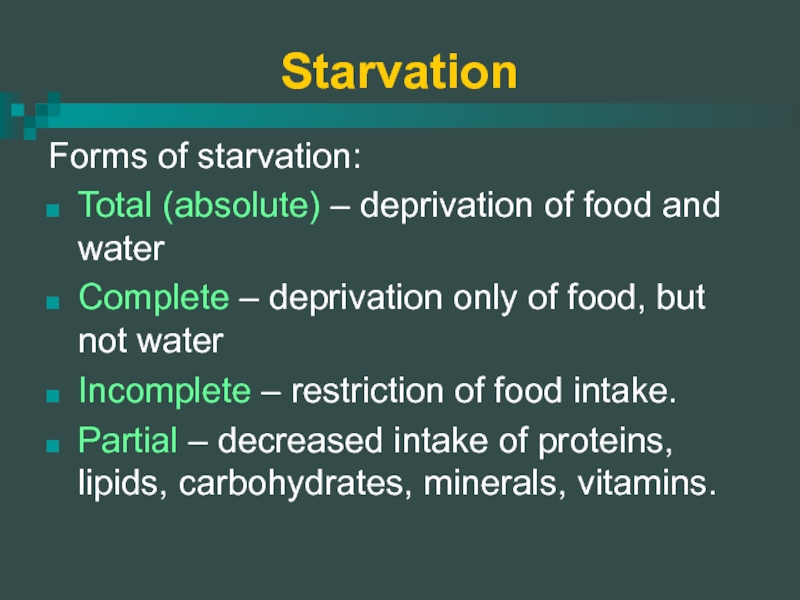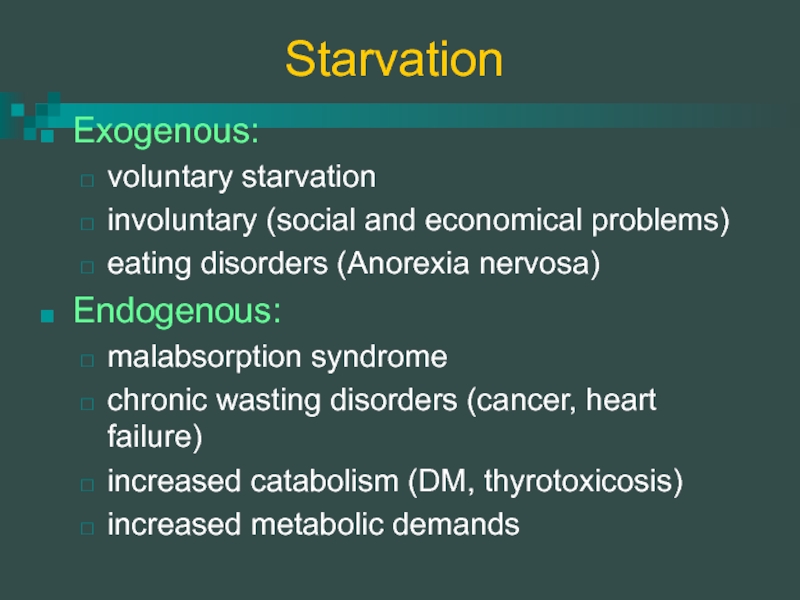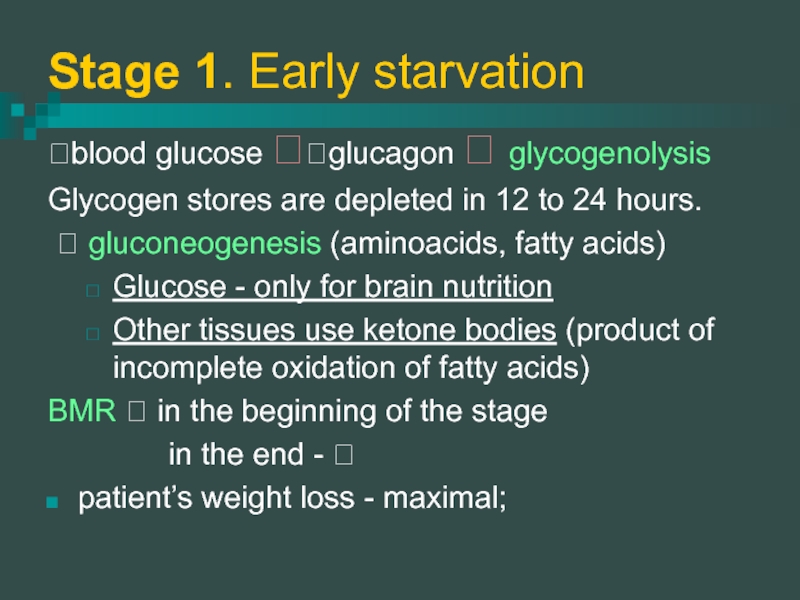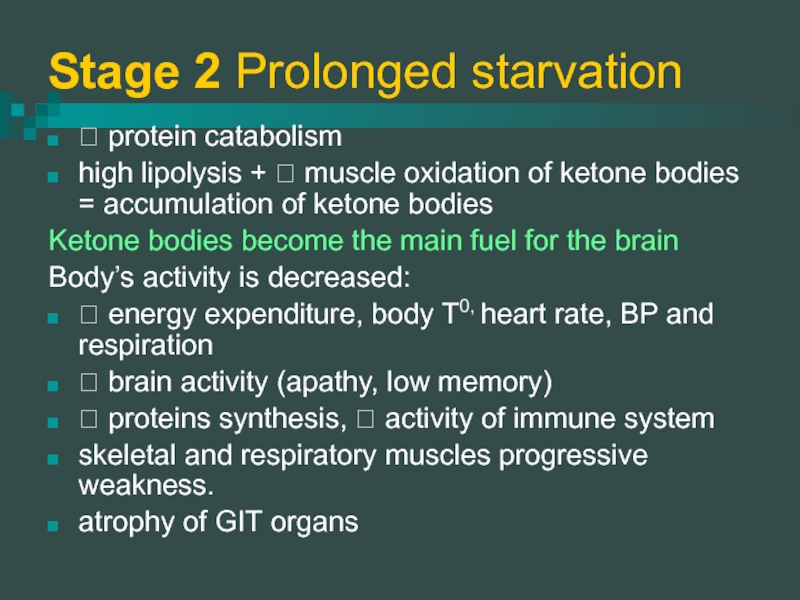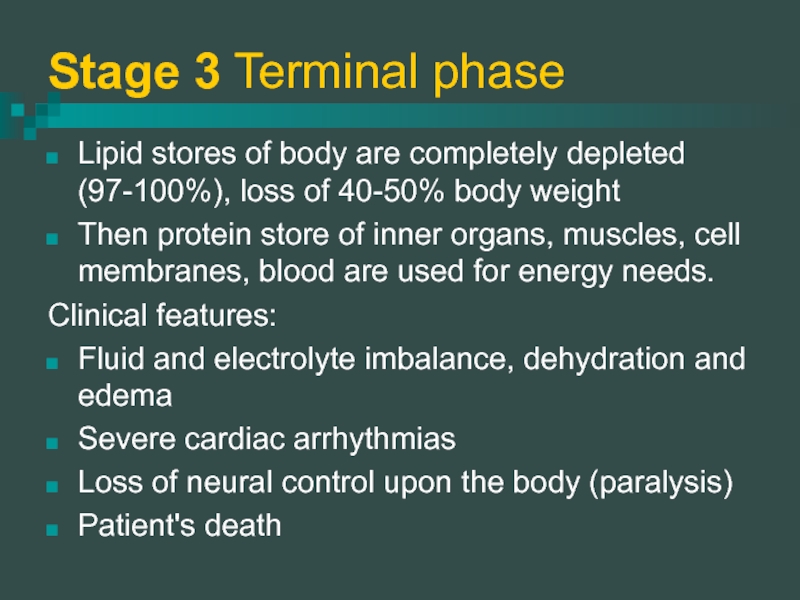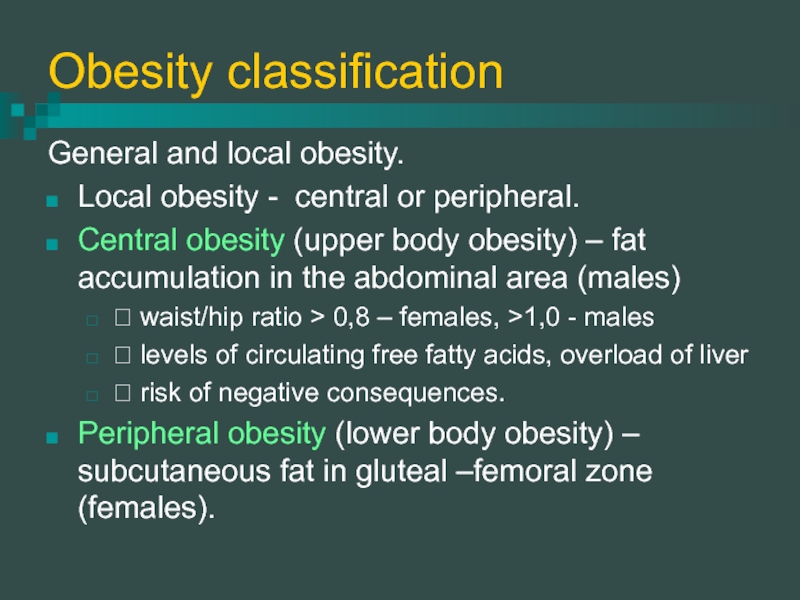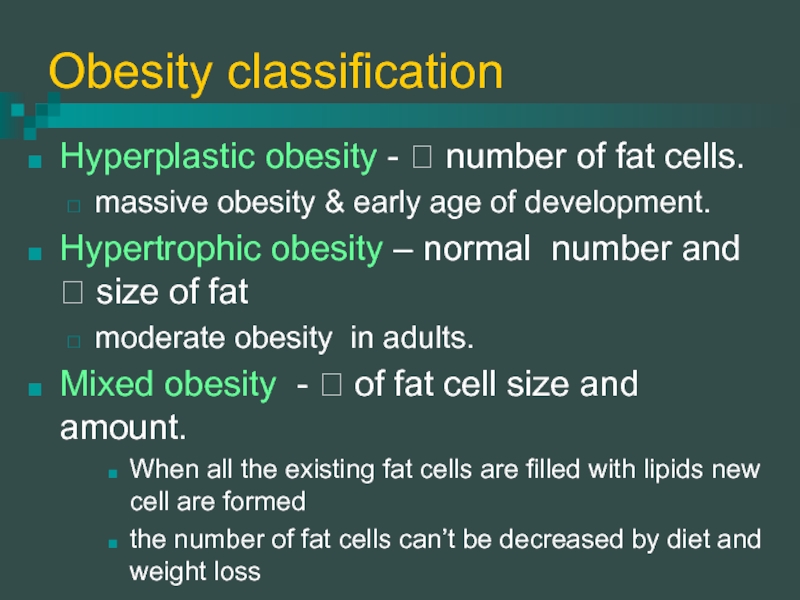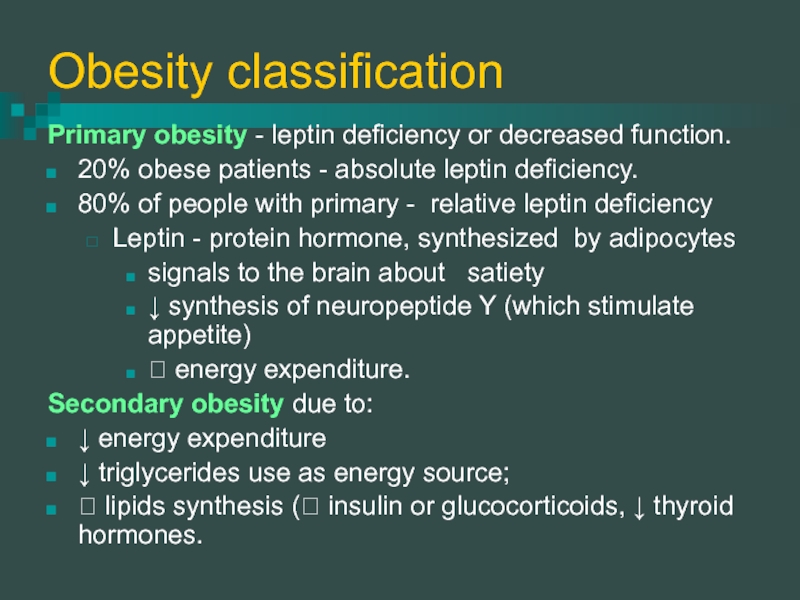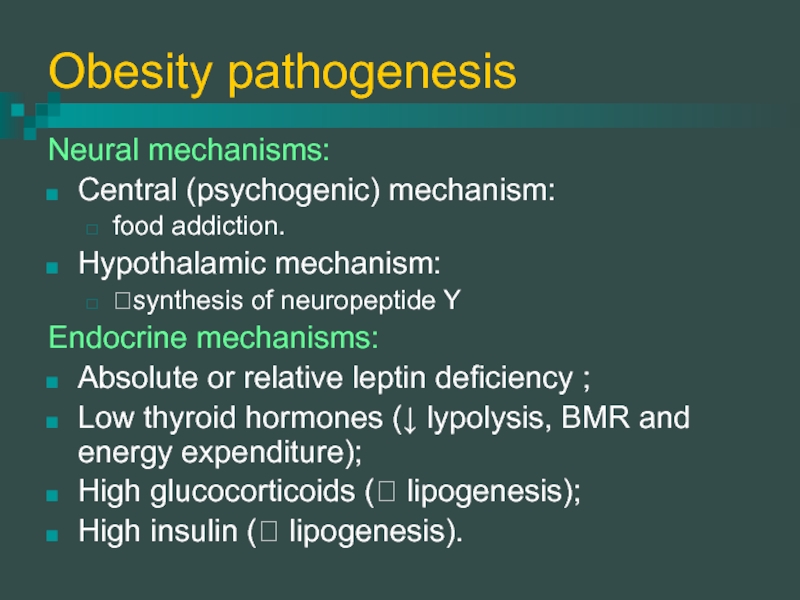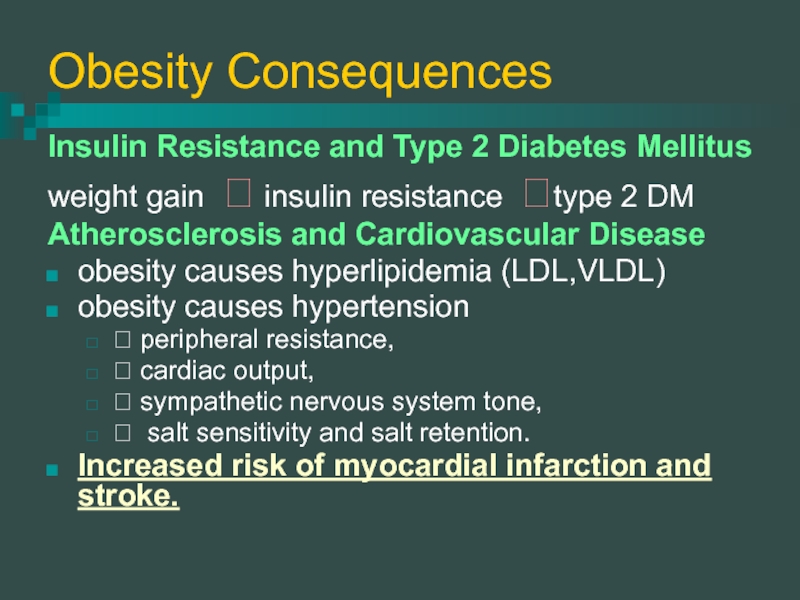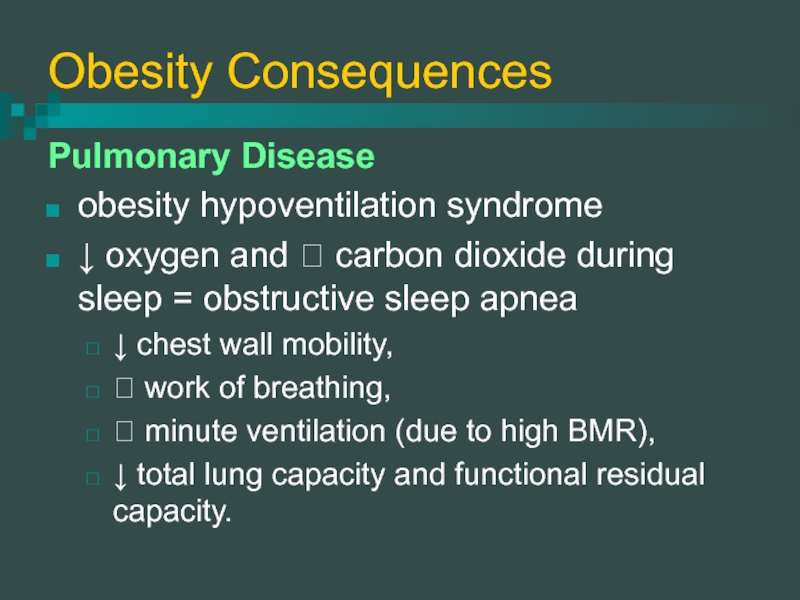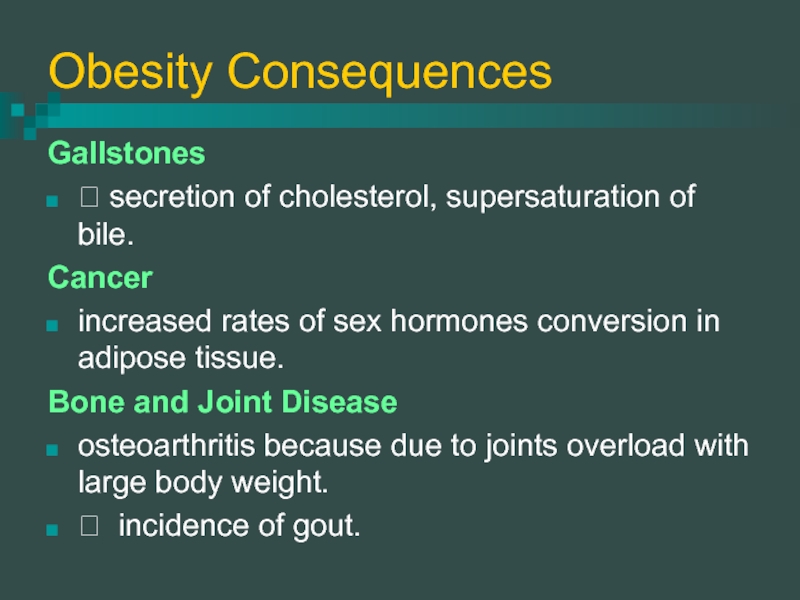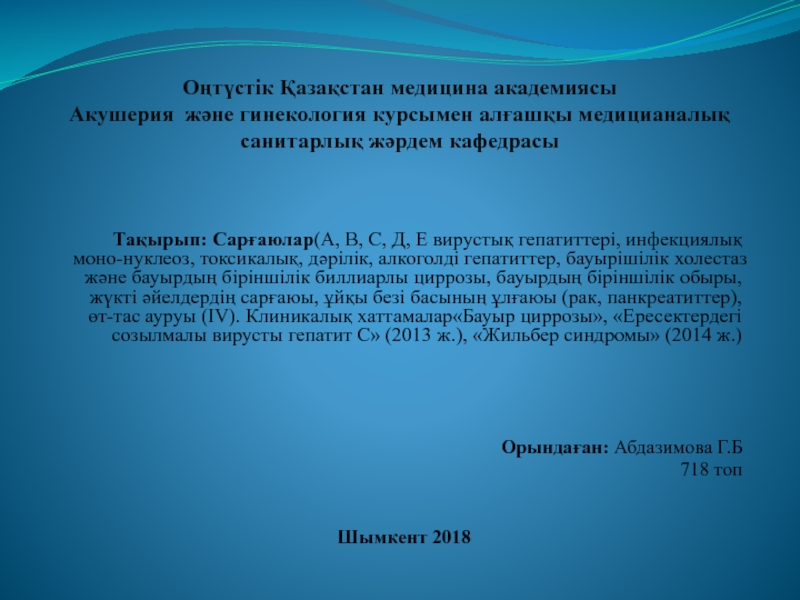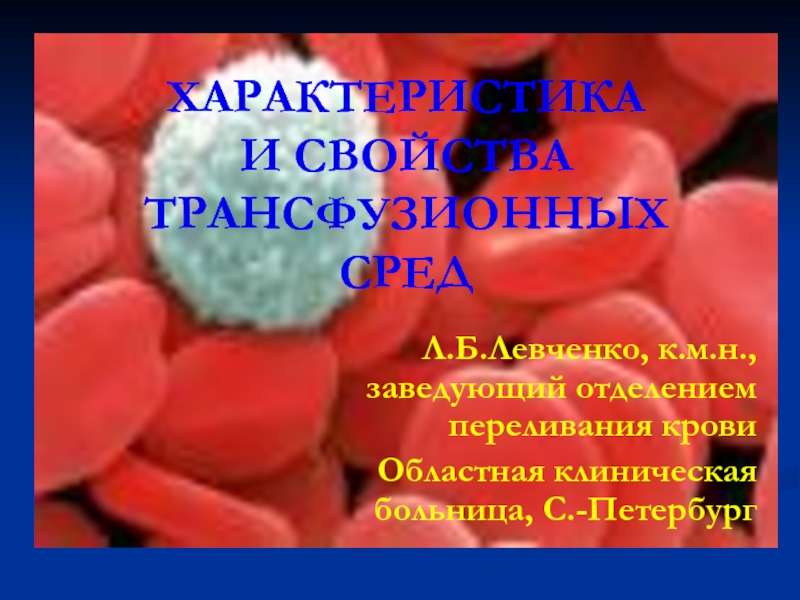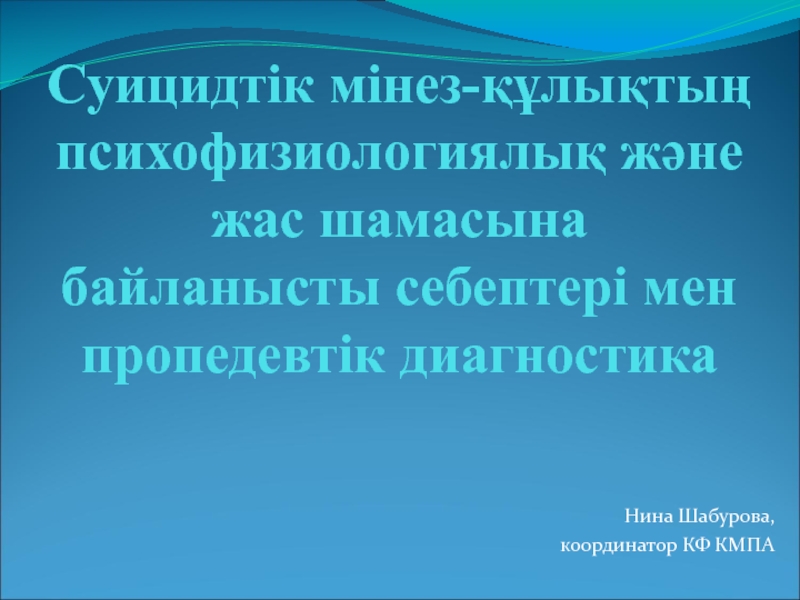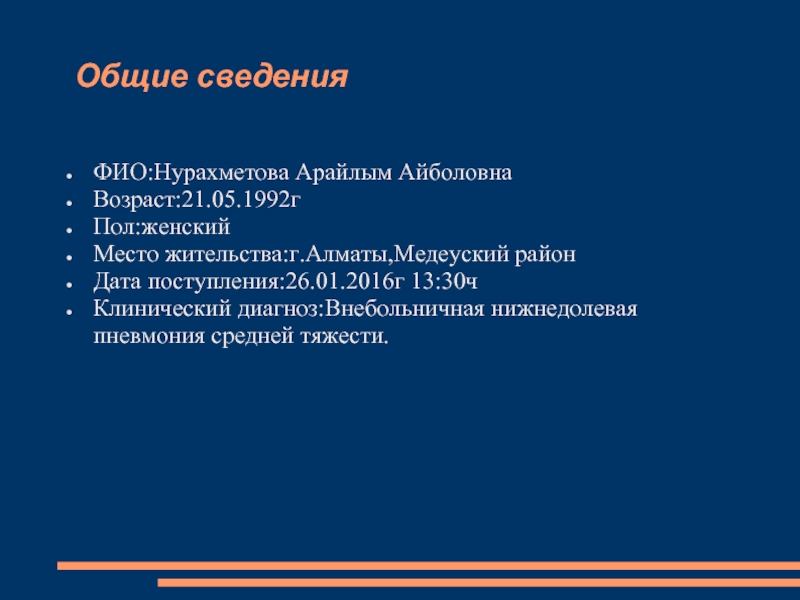- Главная
- Разное
- Дизайн
- Бизнес и предпринимательство
- Аналитика
- Образование
- Развлечения
- Красота и здоровье
- Финансы
- Государство
- Путешествия
- Спорт
- Недвижимость
- Армия
- Графика
- Культурология
- Еда и кулинария
- Лингвистика
- Английский язык
- Астрономия
- Алгебра
- Биология
- География
- Детские презентации
- Информатика
- История
- Литература
- Маркетинг
- Математика
- Медицина
- Менеджмент
- Музыка
- МХК
- Немецкий язык
- ОБЖ
- Обществознание
- Окружающий мир
- Педагогика
- Русский язык
- Технология
- Физика
- Философия
- Химия
- Шаблоны, картинки для презентаций
- Экология
- Экономика
- Юриспруденция
Disorders of metabolism. (Subject 9) презентация
Содержание
- 1. Disorders of metabolism. (Subject 9)
- 2. ABB regulation
- 3. Blood buffer systems Bicarbonate buffer system
- 4. Physiological mechanisms of ABB regulation Respiratory
- 5. Respiratory acidosis Reason: hypoventilation of lungs
- 6. The effects of high pCO2 spasm of
- 7. Metabolic acidosis Reasons: failure of the kidneys
- 8. Metabolic acidosis Formation of excess of metabolic
- 9. Acidosis clinical manifestation depression of the central
- 10. Respiratory alkalosis Reason - hyperventilation: excitation of
- 11. Metabolic alkalosis Reasons: Diuretic drugs – reabsorption
- 12. Clinical manifestation of alkalosis ? pCO2 –
- 13. Water (Fluid) Balance Disorders Hypohydration symptoms (2-15%
- 14. Water (Fluid) Balance Disorders Hypohydration symptoms Nervous
- 15. Hypohydration causes concentration of electrolytes in blood plasma (osmotic pressure) low normal high
- 16. Hyperhydration causes concentration of electrolytes in blood plasma (osmotic pressure) low normal high
- 17. Hyperhydration symptoms ? blood circulating volume
- 18. Edema Accumulation of excess fluid: in intercellular
- 19. Edema mechanisms ? capillary hydrostatic pressure (high
- 20. Starvation Forms of starvation: Total (absolute) –
- 21. Starvation Exogenous: voluntary starvation involuntary (social
- 22. Stage 1. Early starvation blood glucose ??glucagon
- 23. Stage 2 Prolonged starvation protein
- 24. Stage 3 Terminal phase Lipid stores of
- 25. Obesity Excessive accumulation and storage of
- 26. Obesity classification General and local obesity. Local
- 27. Obesity classification Hyperplastic obesity - ⭡ number
- 28. Obesity classification Primary obesity - leptin deficiency
- 29. Obesity pathogenesis Neural mechanisms: Central (psychogenic) mechanism:
- 30. Obesity Consequences Insulin Resistance and Type 2
- 31. Obesity Consequences Pulmonary Disease obesity hypoventilation
- 32. Obesity Consequences Gallstones ⭡ secretion of
Слайд 3Blood buffer systems
Bicarbonate buffer system
the most mobile (can be
regulated by lungs and kidneys) 7-9% of general blood buffer capacity .
Proteins, especially hemoglobin (oxy-hemoglobin and reduced hemoglobin)
the most powerful buffer system.
The Phosphate Buffer System
5% of total capacity
works mainly in intra-cellular fluids and urine
Proteins, especially hemoglobin (oxy-hemoglobin and reduced hemoglobin)
the most powerful buffer system.
The Phosphate Buffer System
5% of total capacity
works mainly in intra-cellular fluids and urine
Слайд 4Physiological mechanisms of ABB regulation
Respiratory system
regulation of the PCO2 and,
hence, H2CO3 of the blood
Kidneys
acidogenesis, ammoniogenesis, Berliner’s exchange, excretion of phosphates
GIT
stomach HCL, intestinal content, ammonia in liver
Kidneys
acidogenesis, ammoniogenesis, Berliner’s exchange, excretion of phosphates
GIT
stomach HCL, intestinal content, ammonia in liver
Слайд 5Respiratory acidosis
Reason: hypoventilation of lungs (obturation of respiratory tract, pulmonary
edema, ? of respiratory center , problems with respiratory muscles and thoracic chest)
Compensatory mechanisms:
Acute - ? frequency and depth of respiration.
Long-term
hemoglobin buffer (5-10 minutes)
renal acidogenesis (3-5 days).
Compensatory mechanisms:
Acute - ? frequency and depth of respiration.
Long-term
hemoglobin buffer (5-10 minutes)
renal acidogenesis (3-5 days).
Слайд 6The effects of high pCO2
spasm of peripheral arterioles, ? of BP
? urine formation.
brain vessels dilate, ? spinal fluid and ? of intracranial pressure ?headache
sedative effect on nervous system.
activation of vagal nerve (bradycardia, spasm of bronchial muscles, ? mucus secretion) – vicious circle
Слайд 7Metabolic acidosis
Reasons:
failure of the kidneys to excrete the metabolic acids (uremia)
loss
of bases from GIT (diarrhea, loss of pancreatic secretions)
exogenous acidosis :
long excessive consumption of sour food
poisoning with acids
exogenous acidosis :
long excessive consumption of sour food
poisoning with acids
Слайд 8Metabolic acidosis
Formation of excess of metabolic acids in the body:
Ketoacidosis: accumulation
of keton bodies (diabetes mellitus).
Lactate-acidosis: physical overload, severe hypoxia, permanent fever, liver failure
Compensation:
? pulmonary ventilation.
Protein and hemoglobin buffer (accumulate H+).
Acidogenesis, reabsorbtion of bases in kidneys. ↓urine pH
Lactate-acidosis: physical overload, severe hypoxia, permanent fever, liver failure
Compensation:
? pulmonary ventilation.
Protein and hemoglobin buffer (accumulate H+).
Acidogenesis, reabsorbtion of bases in kidneys. ↓urine pH
Слайд 9Acidosis clinical manifestation
depression of the central nervous system (from disorientation to
coma).
? blood vessels tone, ? brain and heart circulation (circulatory hypoxia)
Kussmaul respiration (metabolic acidosis)
? pulmonary ventilation in respiratory acidosis.
? K in plasma ?arrhythmia
decalcification of tissues
? blood vessels tone, ? brain and heart circulation (circulatory hypoxia)
Kussmaul respiration (metabolic acidosis)
? pulmonary ventilation in respiratory acidosis.
? K in plasma ?arrhythmia
decalcification of tissues
Слайд 10Respiratory alkalosis
Reason - hyperventilation:
excitation of respiratory center (brain inflammation or edema)
reflex
stimulation of respiratory center (pneumonia, pneumosclerosis, altitude and mountain disease)
incorrect artificial respiration.
Compensation:
Decrease of pulmonary ventilation
Excretion of bases with urine
incorrect artificial respiration.
Compensation:
Decrease of pulmonary ventilation
Excretion of bases with urine
Слайд 11Metabolic alkalosis
Reasons:
Diuretic drugs – reabsorption of Na; loss of H+ and
K+
Excessive use of sodium bicarbonate (treatment of gastritis or peptic ulcer).
Loss of Cl ions - excessive vomiting of gastric contents.
Excess of aldosterone (see diuretic drugs)
Excessive use of sodium bicarbonate (treatment of gastritis or peptic ulcer).
Loss of Cl ions - excessive vomiting of gastric contents.
Excess of aldosterone (see diuretic drugs)
Слайд 12Clinical manifestation of alkalosis
? pCO2 – spasm of brain vessels and
dilation of peripheral vessels ? collapse? ?kidney function
? Ca - muscles tetany (tonic spasm).
? K – muscles paralysis (respiratory , intestinal obstruction)
overexcitability of the nervous system:
CNS – nervousness, excitation,
? affinity of oxygen to hemoglobin ? tissue hypoxia and cellular acidosis
? Ca - muscles tetany (tonic spasm).
? K – muscles paralysis (respiratory , intestinal obstruction)
overexcitability of the nervous system:
CNS – nervousness, excitation,
? affinity of oxygen to hemoglobin ? tissue hypoxia and cellular acidosis
Слайд 13Water (Fluid) Balance Disorders
Hypohydration symptoms (2-15% of body weight)
? of blood
circulating volume
weight loss of the patient
strong thirst, dry mouth
? saliva, tears production
? urine output
? skin elasticity
eye collapse and abnormal vision.
? of blood viscosity (hemoconcentration)
weight loss of the patient
strong thirst, dry mouth
? saliva, tears production
? urine output
? skin elasticity
eye collapse and abnormal vision.
? of blood viscosity (hemoconcentration)
Слайд 14Water (Fluid) Balance Disorders
Hypohydration symptoms
Nervous system disorders:
headache, dizziness,
disorders of consciousness, inability
to speak, illusions
Hypoxia of mixed type:
due to disturbances in blood flow (circulatory hypoxia),
decrease in lungs perfusion (respiratory hypoxia),
metabolic disturbances in organs (tissue hypoxia).
? breathing and tachycardia
Hypoxia of mixed type:
due to disturbances in blood flow (circulatory hypoxia),
decrease in lungs perfusion (respiratory hypoxia),
metabolic disturbances in organs (tissue hypoxia).
? breathing and tachycardia
Слайд 15Hypohydration causes
concentration of electrolytes in blood plasma (osmotic pressure)
low
normal
high
Слайд 16Hyperhydration causes
concentration of electrolytes in blood plasma (osmotic pressure)
low
normal
high
Слайд 17Hyperhydration symptoms
? blood circulating volume and ABP
heart overload
general edema
(cardiac failure and hypoproteinemia)
polyuria (in absence of kidney diseases)
Water intoxication (severe cases) :
pulmonary edema
brain edema (headache, inadequate behavior, disorders of consciousness)
nausea, vomiting (intracranial hypertension)
hemolysis of erythrocytes.
polyuria (in absence of kidney diseases)
Water intoxication (severe cases) :
pulmonary edema
brain edema (headache, inadequate behavior, disorders of consciousness)
nausea, vomiting (intracranial hypertension)
hemolysis of erythrocytes.
Слайд 18Edema
Accumulation of excess fluid:
in intercellular space
body cavities (hydrothorax, hydropericardium and
hydroperitoneum (ascites))
generalized (anasarca) or local disorder
inflammatory (exudate) or non-inflammatory (transudate) origin
generalized (anasarca) or local disorder
inflammatory (exudate) or non-inflammatory (transudate) origin
Слайд 19Edema mechanisms
? capillary hydrostatic pressure (high venous BP – local, systemic)
Alterations
in oncotic pressure (low albumin content - problems with intake, digestion, synthesis, loss)
Impaired lymph flow (filariasis, trauma, surgery, tumors)
Renal retention of Na and water (impaired kidney function)
Impaired lymph flow (filariasis, trauma, surgery, tumors)
Renal retention of Na and water (impaired kidney function)
Слайд 20Starvation
Forms of starvation:
Total (absolute) – deprivation of food and water
Complete –
deprivation only of food, but not water
Incomplete – restriction of food intake.
Partial – decreased intake of proteins, lipids, carbohydrates, minerals, vitamins.
Incomplete – restriction of food intake.
Partial – decreased intake of proteins, lipids, carbohydrates, minerals, vitamins.
Слайд 21Starvation
Exogenous:
voluntary starvation
involuntary (social and economical problems)
eating disorders (Anorexia nervosa)
Endogenous:
malabsorption syndrome
chronic wasting disorders (cancer, heart failure)
increased catabolism (DM, thyrotoxicosis)
increased metabolic demands
Слайд 22Stage 1. Early starvation
blood glucose ??glucagon ? glycogenolysis
Glycogen stores are depleted
in 12 to 24 hours.
? gluconeogenesis (aminoacids, fatty acids)
Glucose - only for brain nutrition
Other tissues use ketone bodies (product of incomplete oxidation of fatty acids)
BMR ? in the beginning of the stage
in the end -
patient’s weight loss - maximal;
? gluconeogenesis (aminoacids, fatty acids)
Glucose - only for brain nutrition
Other tissues use ketone bodies (product of incomplete oxidation of fatty acids)
BMR ? in the beginning of the stage
in the end -
patient’s weight loss - maximal;
Слайд 23Stage 2 Prolonged starvation
protein catabolism
high lipolysis +
muscle oxidation of ketone bodies = accumulation of ketone bodies
Ketone bodies become the main fuel for the brain
Body’s activity is decreased:
energy expenditure, body T0, heart rate, BP and respiration
brain activity (apathy, low memory)
proteins synthesis, activity of immune system
skeletal and respiratory muscles progressive weakness.
atrophy of GIT organs
Ketone bodies become the main fuel for the brain
Body’s activity is decreased:
energy expenditure, body T0, heart rate, BP and respiration
brain activity (apathy, low memory)
proteins synthesis, activity of immune system
skeletal and respiratory muscles progressive weakness.
atrophy of GIT organs
Слайд 24Stage 3 Terminal phase
Lipid stores of body are completely depleted (97-100%),
loss of 40-50% body weight
Then protein store of inner organs, muscles, cell membranes, blood are used for energy needs.
Clinical features:
Fluid and electrolyte imbalance, dehydration and edema
Severe cardiac arrhythmias
Loss of neural control upon the body (paralysis)
Patient's death
Then protein store of inner organs, muscles, cell membranes, blood are used for energy needs.
Clinical features:
Fluid and electrolyte imbalance, dehydration and edema
Severe cardiac arrhythmias
Loss of neural control upon the body (paralysis)
Patient's death
Слайд 25 Obesity
Excessive accumulation and storage of fat in the body.
Body
mass index (BMI) - weight/height (in kg/m2).
Normal BMI - 19 to 25 kg/m2.
25-30 - overweight or obesity 1st stage.
30-40 - obesity 2nd stage
over 40 - 3rd stage (morbid obesity)
Normal BMI - 19 to 25 kg/m2.
25-30 - overweight or obesity 1st stage.
30-40 - obesity 2nd stage
over 40 - 3rd stage (morbid obesity)
Слайд 26Obesity classification
General and local obesity.
Local obesity - central or peripheral.
Central
obesity (upper body obesity) – fat accumulation in the abdominal area (males)
⭡ waist/hip ratio > 0,8 – females, >1,0 - males
⭡ levels of circulating free fatty acids, overload of liver
⭡ risk of negative consequences.
Peripheral obesity (lower body obesity) – subcutaneous fat in gluteal –femoral zone (females).
⭡ waist/hip ratio > 0,8 – females, >1,0 - males
⭡ levels of circulating free fatty acids, overload of liver
⭡ risk of negative consequences.
Peripheral obesity (lower body obesity) – subcutaneous fat in gluteal –femoral zone (females).
Слайд 27Obesity classification
Hyperplastic obesity - ⭡ number of fat cells.
massive obesity &
early age of development.
Hypertrophic obesity – normal number and ⭡ size of fat
moderate obesity in adults.
Mixed obesity - ⭡ of fat cell size and amount.
When all the existing fat cells are filled with lipids new cell are formed
the number of fat cells can’t be decreased by diet and weight loss
Hypertrophic obesity – normal number and ⭡ size of fat
moderate obesity in adults.
Mixed obesity - ⭡ of fat cell size and amount.
When all the existing fat cells are filled with lipids new cell are formed
the number of fat cells can’t be decreased by diet and weight loss
Слайд 28Obesity classification
Primary obesity - leptin deficiency or decreased function.
20% obese patients
- absolute leptin deficiency.
80% of people with primary - relative leptin deficiency
Leptin - protein hormone, synthesized by adipocytes
signals to the brain about satiety
↓ synthesis of neuropeptide Y (which stimulate appetite)
⭡ energy expenditure.
Secondary obesity due to:
↓ energy expenditure
↓ triglycerides use as energy source;
⭡ lipids synthesis (⭡ insulin or glucocorticoids, ↓ thyroid hormones.
80% of people with primary - relative leptin deficiency
Leptin - protein hormone, synthesized by adipocytes
signals to the brain about satiety
↓ synthesis of neuropeptide Y (which stimulate appetite)
⭡ energy expenditure.
Secondary obesity due to:
↓ energy expenditure
↓ triglycerides use as energy source;
⭡ lipids synthesis (⭡ insulin or glucocorticoids, ↓ thyroid hormones.
Слайд 29Obesity pathogenesis
Neural mechanisms:
Central (psychogenic) mechanism:
food addiction.
Hypothalamic mechanism:
⭡synthesis of neuropeptide Y
Endocrine mechanisms:
Absolute or relative leptin deficiency ;
Low thyroid hormones (↓ lypolysis, BMR and energy expenditure);
High glucocorticoids (⭡ lipogenesis);
High insulin (⭡ lipogenesis).
Слайд 30Obesity Consequences
Insulin Resistance and Type 2 Diabetes Mellitus
weight gain ?
insulin resistance ?type 2 DM
Atherosclerosis and Cardiovascular Disease
obesity causes hyperlipidemia (LDL,VLDL)
obesity causes hypertension
⭡ peripheral resistance,
⭡ cardiac output,
⭡ sympathetic nervous system tone,
⭡ salt sensitivity and salt retention.
Increased risk of myocardial infarction and stroke.
Atherosclerosis and Cardiovascular Disease
obesity causes hyperlipidemia (LDL,VLDL)
obesity causes hypertension
⭡ peripheral resistance,
⭡ cardiac output,
⭡ sympathetic nervous system tone,
⭡ salt sensitivity and salt retention.
Increased risk of myocardial infarction and stroke.
Слайд 31Obesity Consequences
Pulmonary Disease
obesity hypoventilation syndrome
↓ oxygen and ⭡ carbon
dioxide during sleep = obstructive sleep apnea
↓ chest wall mobility,
⭡ work of breathing,
⭡ minute ventilation (due to high BMR),
↓ total lung capacity and functional residual capacity.
↓ chest wall mobility,
⭡ work of breathing,
⭡ minute ventilation (due to high BMR),
↓ total lung capacity and functional residual capacity.
Слайд 32Obesity Consequences
Gallstones
⭡ secretion of cholesterol, supersaturation of bile.
Cancer
increased
rates of sex hormones conversion in adipose tissue.
Bone and Joint Disease
osteoarthritis because due to joints overload with large body weight.
⭡ incidence of gout.
Bone and Joint Disease
osteoarthritis because due to joints overload with large body weight.
⭡ incidence of gout.
